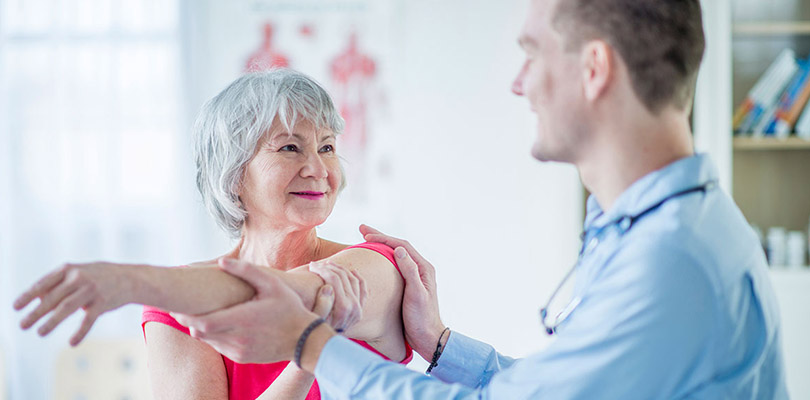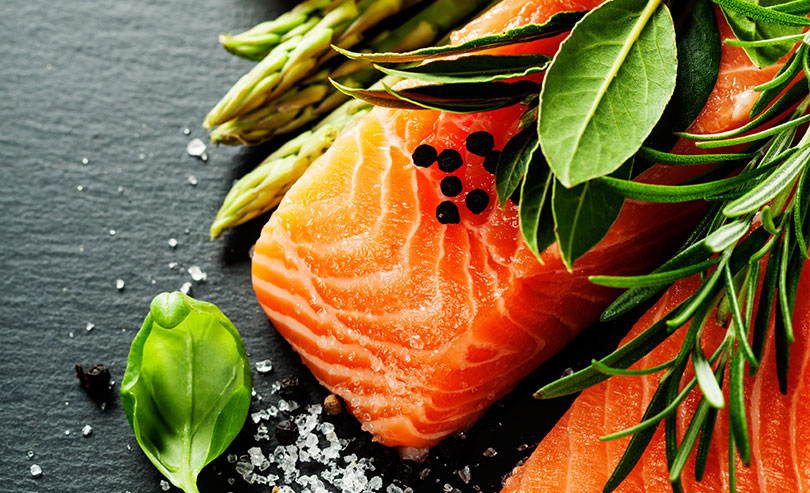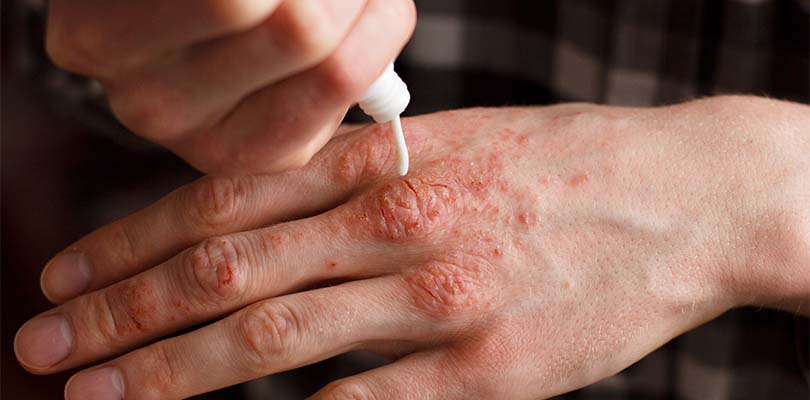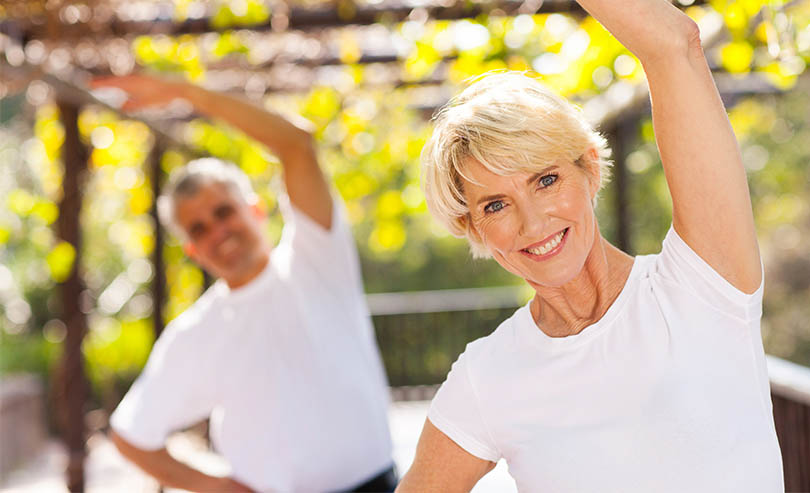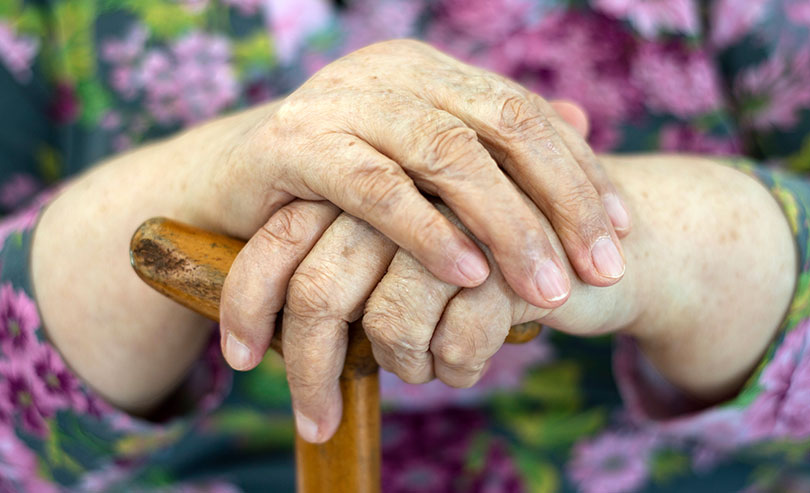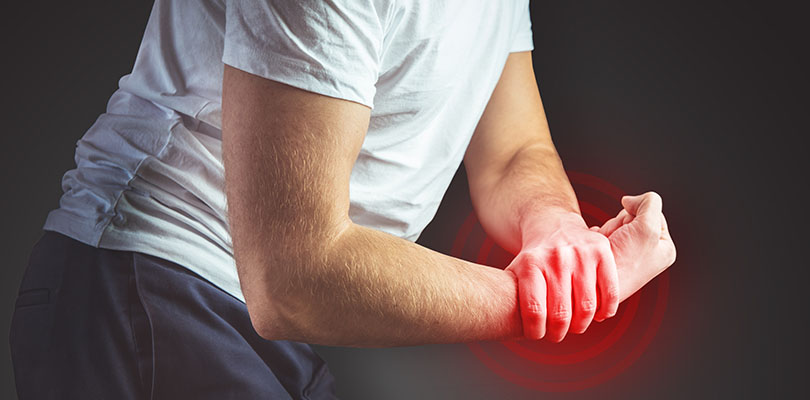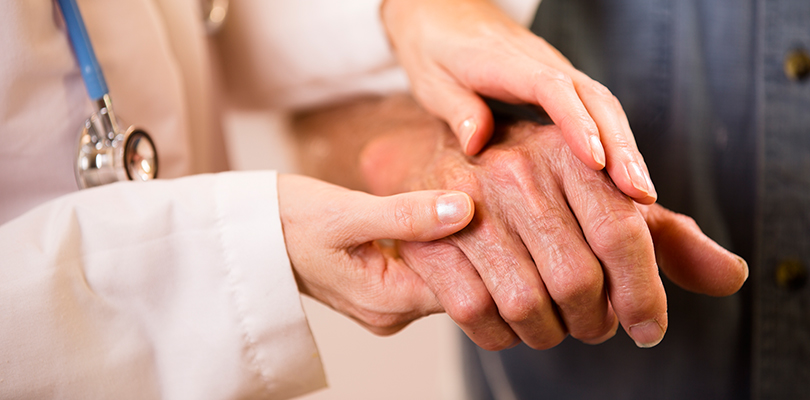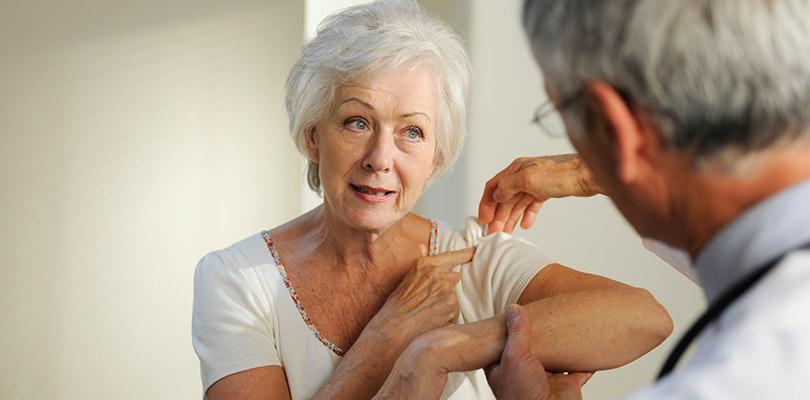Searching for Arthritis Pain Relief? Try These 10 Options!
People with arthritis have a difficult time with painful joints. The pattern varies for every person, but typically fingers, knees and hips are affected. Every time you move, you feel the pain.
This swelling, called osteoarthritis or just arthritis, is a swelling in the joints caused by wear and tear over the years. When the rubbery cartilage covering your bones breaks down, there’s nothing to cushion them. They rub against each other, become inflamed – and that causes the pain.
The good news is, multiple treatments can help relieve the pain. While medications can certainly help bring arthritis pain relief, you can also benefit significantly from lifestyle changes and other natural methods.
Physical Activity
While you might not feel like getting exercise, it’s the best thing to relieve arthritis pain and reduce joint damage. When you exercise, you also lose weight – which lessens the stress on your joints.
You might think that a little walking is all you need, but you benefit from the three types of exercise:
- Strength training: When you build strength, you protect your joints from injury. Lifting weights, doing pushups or sit-ups, or strengthening machines at the gym will build muscle and can help protect your joints from injury.
- Aerobics: Walking, biking, running, swimming or using a treadmill are great aerobic exercises. You will burn calories so you will lose weight (also good for arthritis pain relief). These activities also help increase stamina and strengthen your heart and lungs. Over time, you will find you don’t get tired as quickly.
- Stretching: Yoga, Tai Chi, and Pilates are perfect stretching exercises. They increase your flexibility and range of motion and will help lubricate your joints.
Walking and water aerobics are the two exercises that the Arthritis Foundation approves. These are easy on the joints and are appropriate for people who are just starting to exercise. They improve physical conditioning and heart health. Water aerobics is an exercise in water and doesn’t require any swimming ability at all.
Wear the Right Shoes
Flat, flexible, closed shoes with arch support are the best choice for reducing pain while walking, according to the Arthritis Association. You’re less likely to fall (compared to flip-flops) or develop other foot problems like plantar fasciitis (foot inflammation).
Try Heat and Cold Therapy
Heating pads, warm compresses, heat patches, warm baths or even hot wax can relax muscles and relieve muscle spasms. When necessary, apply heat two or three times a day for 15 minutes at a time. Be careful not to overdo, as heat can aggravate a muscle sprain.
Lose Weight
Obesity puts excess stress on your knees, hips, and back. Even a moderate weight problem can lead to arthritis pain. Shedding a few pounds will help. But even if you're only moderately overweight, you’ll still benefit if you shed some pounds.
Follow an Anti-Inflammatory Diet
The Mediterranean diet is also known as the anti-inflammatory diet. Basically, you’re eating more “whole food” – and very little processed or fast food, and no more soft drinks.
Fish, vegetables, beans, whole grains, nuts, olive oil, nuts, fruits – those are all central to the “arthritis diet.” When you remove the chemicals and unhealthy fats from your diet, your body (including your joints) will notice the difference – and you’ll feel far less pain.
You might be surprised at the array of natural ingredients that can help soothe pain, relieve inflammation, and slow the progression of rheumatic diseases
Medications
Talk to your doctor before taking pain medications, as there can be serious side effects. Common over-the-counter medications are aspirin, ibuprofen, and naproxen. Prescription medications include oxycodone and hydrocodone. Corticosteroid injections at the pain site are normally for very severe pain.
Nutritional Supplements
Some herbs and supplements may help arthritis, including capsaicin, turmeric, ginger, flaxseed, ginkgo.
Chondroitin sulfate and glucosamine are the most popular, and both are made of compounds found in cartilage. There is little evidence they help your body regenerate the cartilage in your joints. However, some studies have shown they may provide modest pain relief. If you’re unable to tolerate other pain medications, you might try these compounds.
Fish oil is rich in omega-3 fatty acids that can help with joint pain or tenderness. Some people report stomach problems when taking fish oil supplements. Make sure you buy fish oil supplements that don’t contain toxic amounts of mercury or vitamin A.
A supplement called avocado-soybean unsaponifiables (ASU) has had some success in Europe. Avocado oil and soybean oil in the supplement are thought to prevent progression of OA.
Physical Therapy
Physical therapists can work with you on exercises to reduce pain and improve your range of motion. They can also help fit you with braces to support your joints or suggest shoe inserts that can also help to take the pressure off. Scooters, walkers, and canes can help you get around.
Tools like jar openers and steering wheel grips can help you manage day-to-day life more easily when you have trouble gripping things. Your therapist can give you advice on how to use them.
Alternative Therapies
- Acupuncture is the practice of putting thin needles into specific points in the body and has been used for thousands of years in Chinese medicine. Studies have shown that acupuncture may help reduce pain and inflammation related to OA.
- Transcutaneous electrical nerve stimulation (TENS), uses electrodes to send electrical impulses to nerve pathways. This may help lessen pain related to OA.
- Neuromuscular electrical stimulation (NMES) is a similar technology that affects the muscle tissue that supports the joint and is useful in treating OA of the knee.
- Creative visualization, or guided imagery, may help you relieve stiffness by imagining a pain-free body. Athletes, astronauts, and hospital patients use creative visualization to overcome pain, which also serves to reduce stress and depression caused by chronic pain.
- Healing magnets and copper bracelets are inexpensive and have no side effects. But there is no evidence that they will help your joints.
Advanced Treatments
If you've tried a number of remedies and got no relief or only a temporary relief, your doctor may suggest advanced treatments. Pain pumps, peripheral nerve stimulation, facet joint denervation, and deep brain stimulation are devices that can work well in controlling pain.
In some cases, surgery is necessary to correct severe joint damage, severe pain, or very limited motion. These procedures can relieve pain and provide better mobility.
- Arthroscopic surgery allows surgeons to repair the surfaces of damaged joints.
- Joint replacement surgery replaces damaged joints with artificial joints – hips and knees.
- Osteotomy can improve stability in knees and hips.
- Joint fusion is very useful with damaged ankle joints.
If you’ve put up with painful joints for a while, it’s time to see a doctor. Real pain relief is possible, but you’ve got to take the first step.
